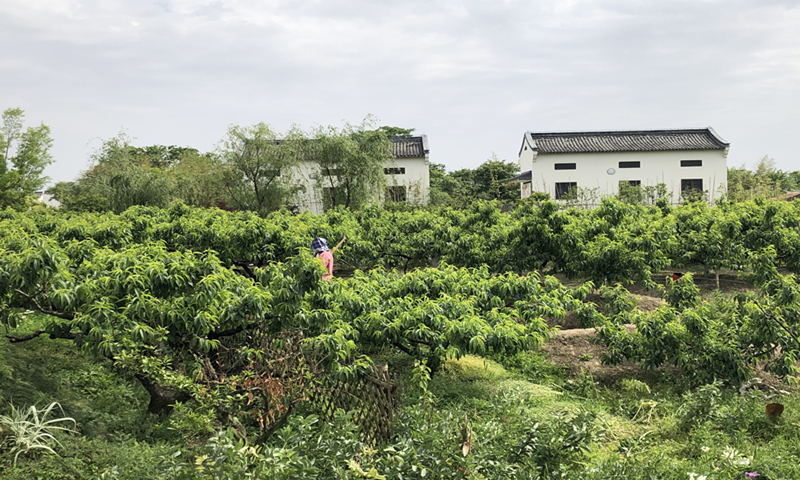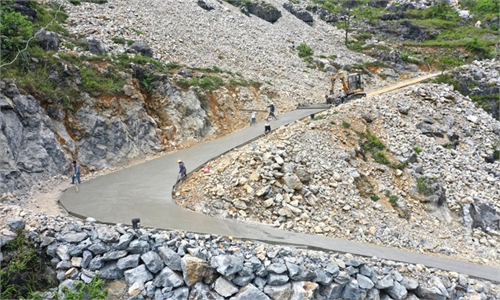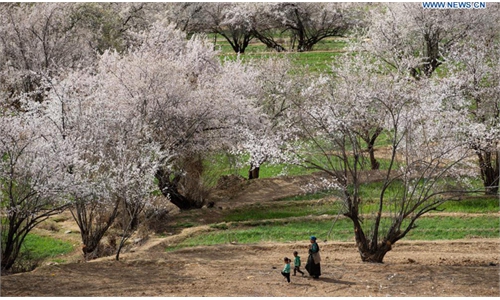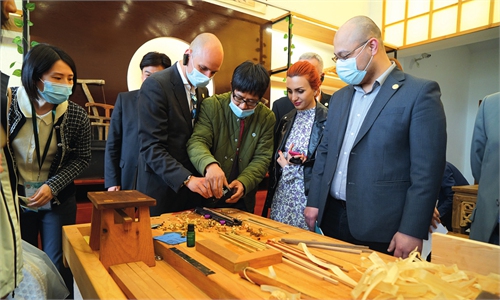Visit to Wufang Village near Shanghai gives clues about China's rural revitalization

A villager tends the peach orchard garden at Wufang Village in Shanghai on Thursday. Photo: Chu Daye/GT
Recently I paid a visit to Wufang Village, a tiny village in suburban Shanghai that has gained some fame as a weekend getaway with its beautiful peach orchards, renovated houses, and an influx of young people working and living there.Interestingly, the renovation work of the village was carried out by China Communications Construction Co (CCCC), which is known for its flagship projects under the Belt and Road Initiative such as the Colombo Port City in Sri Lanka, the Gwadar Port in Pakistan, and the Mombasa-Nairobi Railway in Kenya.
Just a minute. How did China's island-lifting, valley-bridging, and sea-crossing infrastructure giant get interested in beautifying and revitalizing a village?
Economics are at work. A CCCC executive told me that they believe this will be a gigantic market given the number of villages in need of such revitalization. Indeed, as the pandemic reduces opportunities in the global market, more and more Chinese companies are looking at the domestic market with growing enthusiasm.
The Chinese government, after declaring a sweeping victory in its poverty alleviation fight, has moved on to a higher level by undertaking a greater mission to revitalize its rural areas.
The new goal is daunting. Whereas poverty alleviation aims to lift 100 million people above a certain income level, the revitalization of rural areas has no set rules and few localities know how to kickstart this thorny issue of significantly improving the livelihoods of 700 million people living in rural areas.
Yet the tiny Wufang Village stands out as an example: its orchard-view hotel rooms are popular with city residents during the weekend; the village has nurtured peach-related industries that have proved to be great sells to tourists; senior citizens in the village get jobs maintaining the hotels and tourist attractions, and rent-sensitive young people start businesses here, bringing vital young blood that helps the village to stay in sync with the modern world.
A really revitalized Chinese village is one with income-generating industries, with young people taking up permanent residence, with the support of locals and the involvement of private companies whose business acumen is vital to the sustainable development of the village.
Wufang offers not a textbook but some worthy guidelines. Due to its success, a large number of government officials from other localities in China have come to see if they can pick up a thing or two.
As hundreds of millions of Chinese look to the horizon of domestic tourism for pastime and pleasure, they will need a place to fish, educate their kids about rural life and pick strawberries, and they need that place to be near to their urban homes. This has meant vast opportunities for villages like Wufang, located at the outer rims of China's megacities.
To infrastructure builders like CCCC, Wufang can be copied across the nation and the market it represents is huge. The company has figured out a role in the "Beautiful China" initiative, as more and more companies believe a "Beautiful China" can be built and operated at a profit.




